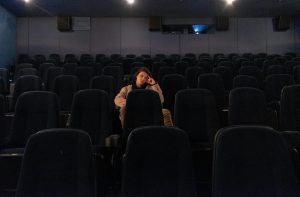Image: https://unsplash.com/photos/woman-in-yellow-shirt-and-black-shorts-playing-soccer-during-daytime-iS2xbABa1iI
This is not just football. Not even just a game. For millions of young Algerians, following the national team is like breathing: a living fire in the chest, a shared rhythm, a real pulse of unity. Every application, every match, every goal is perceived as a personal event. There are no spectators here; everyone lives it. The streets are painted green and white. Some stay up all night, others save on lunches for the sake of the coveted T-shirt, and many tears have been shed to the sounds of the anthem. How deep does this devotion go? Let’s find out.
Pride Worn on Every Jersey
Each Algerian national team jersey is a separate story. Victory at the 2019 African Cup of Nations turned the names of Riyad Mahrez and Ismael Bennacer on the jerseys into almost sacred symbols. All this has long become part of everyday life—and, like the passion for the national team, interest in the game is growing even outside the stadiums. This is also helped by a convenient mobile betting app (in Arabic: برامج المراهنات في مصر), which allows you to follow statistics and support your favorite team from anywhere in the world. And it is available for both Android and iOS.
But let’s get back to the jerseys. The new Adidas “Desert Heritage” uniform for 2024 sold out in Algerian stores in literally two days. Children wear it to school. Teenagers wear it to weddings. Even on ordinary days, jerseys hang on balconies like flags. And it’s not just the names of the stars – young fans are increasingly typing their own names, dreaming of one day earning this coat of arms themselves.
Youth Movements and Match Days
On game day, cities change. Algiers’ Rue Didouche Mourad, the Oran embankment, the Place Constantine—they all turn into living rivers of fans. Thousands of people gather a few hours before the starting whistle. Youth groups like Les Fennecs Ultras put on a show with flares, teach the crowd new chants, and set up huge screens for broadcasts.
In 2023, more than twenty thousand people gathered in the Place 1 de Mayo to watch the qualifying match against Nigeria. School clubs paint new graffiti on the walls in advance of big games. Even in villages like Tizi Ouzou, young people organize buses so that everyone who wants to get to the stadium can. On such evenings, no one sits at home—and many follow every moment of the action through Melbet (in Arabic: ميلبيت), keeping the excitement alive on their phones as well.
Voices Rising in the Stands
Energy at the stadium does not arise by itself – everything is thought out, built, and supported by traditions. Here’s how it all comes to life:
Chants that are passed down from generation to generation: the legendary “One, Two, Three, Viva l’Algérie” was first heard decades ago, but still thunders at every match. Now, teenagers add hip-hop beats to the classics.
Organized fan zones: since 2021, youth projects have been organizing special fan sectors at the Mustafa Chaker stadium in Blida. Everything is synchronized: uniforms, clapping rhythms, signals for the fire show.
Tifos created by local students: entire art departments develop huge canvases and performances. At the game against Egypt in 2024, a banner fifty meters long was unfurled, depicting the team as desert warriors.
Mobile “sound teams”: portable speakers carry songs to markets and bus stops, and teenage crews keep an eye on them. The loudest? “Group 12” from Setif—they are known throughout the country.
The sound does not get stuck in the stands. It breaks out—flows through the streets, is absorbed into cafes, and is heard even in taxis. For ninety minutes, the entire country sounds with one voice.
Social Media and Digital Passion
What starts on the streets quickly moves online—Algerian youth are dictating the football agenda wherever they can write and like. Just look at this:
Before matches, TikTok is filled with makeup tutorials in the colors of the flag. After victories, Twitter and Telegram are full of memes, goal montages, and reaction clips. But this is not just content, but real digital holidays: they discuss every moment, argue, joke, argue again—and, of course, post photos in uniform.
Art, Music, and Football Culture
Football has long been intertwined with creativity here. Artists such as Mounir Fatmi and Khaled Tamzali have left entire walls of murals in Algeria—the national team players on them are like heroes of folk epics. In Tlemcen, graffiti with Yacine Brahimi looks out onto a school yard, and under this drawing, teenagers kick a ball every evening.
Music also lives by football. In 2022, Cheb Bilal released the track “Ma3ak ya Djazair”—it became almost the second anthem at all street festivals. In 2023, DJ Snake blew up social networks with a remix, where he mixed the old paradise with football chants. As soon as Algeria scores, the volume in the cafes immediately increases. Even classic shaabi performers do not ignore it: they add “One, Two, Three” between verses at concerts. All this is part of the country’s general football pulse.
Image: https://unsplash.com/photos/a-group-of-young-men-playing-a-game-of-soccer-so8jkYzXxMA
Local Heroes, Global Hopes
For young Algerians, football is not only about fandom, but also about affinity. Their idols grew up on the same streets, attended the same schools, and shared the same dreams. Here’s how this connection manifests itself in practice:
Ryan Ait Nouri: Born in Montreuil, he absorbed Algerian traditions from childhood, and is now a starting player for Wolverhampton Wanderers and a regular member of the national team.
Houssem Aouar: A product of the suburbs of Lyon, he chose Algeria in 2023 and immediately became a favorite of the youth; his transfer was discussed in all fan groups in the country.
Fares Chaibi: The guy is only 22, but after a brilliant season in Frankfurt, he was called up to the national team. Young people appreciate him for his simplicity and openness; he does not pretend to be a star.
Mohamed Amoura: A fast forward from Jijel, now scores for Belgian club Saint-Gilloise. In the playgrounds, children copy his gestures after goals, as if they were playing in a stadium.
When they score, the joy is truly shared, as if the entire neighborhood has shared the success. These are not just footballers: for many, they are big brothers, legends of the neighborhood, kindred spirits.
From Streets to Stadiums
First you hear, then you see. Balls are pounding the asphalt in Bab El Oued, in the desert; kids are chasing the sand with the same passion as they cheer in the stands. Street football schools, such as ACA Blida and DZ Talents, note that during the years of major tournaments, the number of people interested increases by a third.
And this passion does not go unsupported. The FAF Youth Development Program in 2023 has already covered 18 regional centers, reaching more than 12,000 young players aged 8 to 18 years old. Scouts are increasingly appearing at school matches; now, everyone who dreams has a chance to receive an invitation. The Algerian national team jersey is not just fabric, but a real opportunity.
Even universities have joined in. In 2024, the University of Algiers launched its magazine on youth sports, now featuring serious coverage of student stars and tournaments. Football talk is not only in cafes, but also in auditoriums, at exhibitions, and in cultural centers. This spirit is everywhere.
When Support Becomes Identity
It’s not just shouting from the stands. It’s life, it’s breathing, it’s a real belief in the color green. For the Algerian youth, the team is a reflection of themselves: strength, unity, and confidence in the future. In every stroke of paint on their cheeks, in every flag hung on the balcony, in every chorus that echoes through the city’s backstreets, this support resounds throughout the streets. The love for the team here never abates for a day. It’s always there, always alive, always loud.



